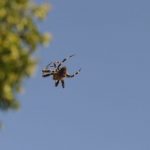 Creepy
Creepy  Creepy
Creepy  Technology
Technology 10 Scientific Breakthroughs of 2025 That’ll Change Everything
 Our World
Our World 10 Ways Icelandic Culture Makes Other Countries Look Boring
 Misconceptions
Misconceptions 10 Common Misconceptions About the Victorian Era
 Mysteries
Mysteries 10 Strange Unexplained Mysteries of 2025
 Miscellaneous
Miscellaneous 10 of History’s Most Bell-Ringing Finishing Moves
 History
History 10 Great Escapes That Ended Right Back in Captivity
 Weird Stuff
Weird Stuff 10 Fascinating Things You Might Not Know About Spiders
 Food
Food 10 Everyday Foods You Didn’t Know Were Invented by the U.S. Military
 History
History 10 Odd Things Colonial Americans Kept at Home
 Creepy
Creepy 10 More Representations of Death from Myth, Legend, and Folktale
 Technology
Technology 10 Scientific Breakthroughs of 2025 That’ll Change Everything
 Our World
Our World 10 Ways Icelandic Culture Makes Other Countries Look Boring
Who's Behind Listverse?

Jamie Frater
Head Editor
Jamie founded Listverse due to an insatiable desire to share fascinating, obscure, and bizarre facts. He has been a guest speaker on numerous national radio and television stations and is a five time published author.
More About Us Misconceptions
Misconceptions 10 Common Misconceptions About the Victorian Era
 Mysteries
Mysteries 10 Strange Unexplained Mysteries of 2025
 Miscellaneous
Miscellaneous 10 of History’s Most Bell-Ringing Finishing Moves
 History
History 10 Great Escapes That Ended Right Back in Captivity
 Weird Stuff
Weird Stuff 10 Fascinating Things You Might Not Know About Spiders
 Food
Food 10 Everyday Foods You Didn’t Know Were Invented by the U.S. Military
 History
History 10 Odd Things Colonial Americans Kept at Home
Ten Bizarre New Facts About Animals
Just when you thought the animal kingdom couldn’t get any weirder, scientists come out with another bizarre study that boggles the mind. Mother Nature is a hotbed of weird and wonderful creatures, from camouflage sharks to moths that navigate by the stars.
In recent months, researchers have lifted the lid on the TV habits of pet dogs, how Burmese pythons digest their victims, why cats tend to sleep on their left side, and plenty more besides. From killer whale skincare to methane-guzzling sea spiders, here are ten astonishing new animal discoveries that may well leave your head in a spin.
Related: 10 Absurd Times That Animals Have Run Amok
10 Dogs Engage with TV Differently Depending on Their Personality
We all love a bit of telly from time to time, and dogs are no exception. Scientists say we can learn a lot about our canine pals by how they react to the box. They studied the viewing habits of 453 canines. Lane Montgomery of Auburn University, Alabama, surveyed hundreds of dog owners and published the results in the journal Nature.
She found that the more excitable, impulsive dogs were more likely to behave as if the shows were playing out live in front of them. These owners said their pets often continue watching objects once they leave the screen, or look around the back of the TV to try to find them. Owners of more timid dogs reported that their animals often react to humans and objects like cars and doorbells. Montgomery found that pets tend to engage with TV shows in the same way regardless of age, gender, or breed.
There was one thing that many of the canines had in common. “Preliminarily, dogs seem to mostly prefer television that includes other dogs and animals,” Montgomery told reporters. Almost half of the survey’s respondents said their pets like to join in whenever a dog barks or howls on screen.[1]
9 Female Moths Steer Clear of Screaming Tomato Plants
Some insects react to noises made by plants, which hints at a secret ecosystem hidden from us humans. Researchers at Tel Aviv University found evidence that female moths tend to steer clear of tomato plants that emit ultrasonic sounds when stressed, avoiding them when searching for a place to lay eggs. The little flutterers appear to pick up these sounds, which signal that the plants are not healthy.
Scientists recently discovered that plants emit high-pitched noises in response to changes in their conditions. The sounds fall outside the range of human hearing. However, many species of insects, bats, and some mammals can detect the signals.
Moths often lay their eggs on the leaves of tomato plants. The larvae then munch away at the greenery after they hatch. Scientists believe that the sounds of unhealthy plants warn mother moths that their leaves are no good for her young. They say plants and animals could have coevolved to signal and listen as an advantage to both species.
Professor Lilach Hadany explained, “Plants could evolve to make more sounds or louder ones if they were of benefit to it, and the hearing of animals may evolve accordingly so they can take in this huge amount of information. This is a vast, unexplored field—an entire world waiting to be discovered.”[2]
8 Blue Sharks Change Color Like Chameleons
Chameleons and octopuses are known for their nifty ability to change color. Now, scientists say that blue sharks can do something similar. A team at the University of Hong Kong has explained how these deep-sea lurkers use crystalline scales to achieve their dazzling blue.
Most sharks are some sort of gray, but Prionace glauca gets its vibrant coat from row upon row of tiny scales. These scales are called dermal denticles, and each one contains melanosomes and guanine crystals that absorb and reflect light. These structures are a fraction of a millimeter in length. The Hong Kong group had to use specialist techniques to probe them, including fine-scale dissection and optical and electron microscopy.
Researchers created a 3D computer model to explain how the sharks reorient their guanine crystals to alter their reflectivity. Minuscule angle shifts turn the fearsome creatures from their usual blue gleam into hues of silver, green, and gold.[3]
7 Burmese Pythons Fully Digest Their Victims’ Bones
The Burmese python is one of the most formidable predators in the animal kingdom. The chilling slitherers trap their prey in their jaws and envelop them with their long bodies. The snakes suffocate their victims, then swallow them whole. They can even process much of the bones and teeth of their meals.
Scientists recently uncovered how the pythons achieve this terrifyingly efficient feeding style. They studied their intestines, along with calcium and hormone levels in the blood. While peering into the snakes’ innards, the team came across an entirely new type of cell.
These narrow cells contain a sort of crypt that captures calcium and other nutrients to prevent blood levels from becoming too high. They essentially hold spheres of excess calcium that are later excreted in the python’s feces. Biologists have since spotted similar cells in other snakes and Gila monster lizards.[4]
6 Cats Tend to Sleep on Their Left Side
You might not have noticed it, but if you own a cat, there’s a good chance that your beloved pet sleeps on its left side. Researchers studied over 400 YouTube videos of cats napping and found that in two-thirds of cases, they favored the left. What’s more, scientists now reckon they can explain why.
Experts in animal behavior suggest sleeping on the left could be a way to remain alert. In feline brains, the right hemisphere is responsible for visuals from the left side, spatial awareness, and threat response. Scientists theorize that by sleeping on their left side, cats keep the right half of their brain more active in case danger suddenly appears and they need to make a speedy getaway.
Felines spend around 12 to 16 hours a day asleep. Domestic cats might not face many threats sprawled out in someone’s house. However, their wild ancestors were far more vulnerable to predators when dozing, which might explain their shared sleeping habit. That said, scientists admit their theory is still in its early stages, and more research is needed before they can say with certainty.[5]
5 Octopuses Taste Microbes with Their Sucker Cups
Octopuses are remarkable creatures. Even though they don’t have noses, the tentacled wonders can detect microbes using the taste sensors on their sucker cups. Many species recognize the foul flavor given off by bacteria in rotten food, which helps them avoid passing tainted meals to their young.
Biologists at Harvard University noticed a mother octopus scouring eggs in the lab and throwing out the spoiled ones. The bad eggs were crawling with bacteria that produce chemicals. Researchers found that when receptors in the sucker cups come into contact with these chemicals, an electrical signal is sent to the brain so the octopus knows the food is no good.[6]
4 Orcas Take Part in a Reciprocal Grooming Regime
Killer whales are often seen as menaces to the underwater world. But when it comes to looking good, new evidence shows that the marine mammals are surprisingly generous. The deep-sea giants craft pieces of kelp into tools so they can help keep their buddies’ skin looking good while they swim. This may be the first evidence of orcas using tools, a striking sign of animal intelligence.
Fewer than 80 killer whales live in the Salish Sea in North America, but pod members take good care of one another. Drone footage revealed their reciprocal grooming regime, in which the animals press together and roll a piece of bull kelp between their bodies. Researchers say the kelp tool helps maintain skin health by brushing off parasites and dead skin.[7]
3 Bogong Moth Looks to the Stars When Navigating
Billions of young Bogong moths voyage across Australia every year to shelter from the summer heat. The tiny brown insects fly over 600 miles (965 km) from the southeast of the country to cool caves in the Australian Alps. When summer is over, they fly back to their birthplace, mate, and then die. Next year, a new generation hatches and the cycle plays out again.
One question that puzzled scientists is how the moths know where to go without anyone to show them. Now, researchers have revealed that the Aussie flutterers navigate using the stars. Bogong moths are the first invertebrates found to use a stellar compass.
The team studied around 400 wild moths by gluing metal rods to their backs and placing them inside a flight arena with no magnetic field. They then reproduced the night sky on the roof of the arena like a planetarium. Even without an internal magnetic compass, the moths were able to point in the same direction and pivoted as they rotated the night sky image. Scientists also saw spikes in brain activity when the stars aligned a certain way. This research suggests that, despite their tiny brains, Bogong moths are more intelligent than once thought.[8]
2 Sea Spiders Gobble Up Methane on the Ocean Floor
Swarms of sea spiders lurk deep in the ocean, feasting on microbes that thrive on methane gas seeping out of the Earth’s crust. Biologists at Occidental College stumbled across three new species of these marine creepy crawlies in a “happy accident.”
The group uncovered these remarkable sea spiders while analyzing samples from near the coasts of California and Alaska. They noticed that the tiny critters hoard microbes on their bodies. These microbes transform methane gas into nutrients like fats and sugars, which the spiders then graze on. “Just like you would eat eggs for breakfast, the sea spider grazes the surface of its body, and it munches all those bacteria for nutrition,” explained Shana Goffredi, the study’s lead author.[9]
1 Nematode Worms Assemble into Wriggling Towers
A column of worms might sound like it comes from a nightmare, but researchers say that slithering, writhing towers are more useful than you might think. Scientists at the Max Planck Institute of Animal Behavior caught the first footage of tiny nematode worms coalescing to form a long, writhing mass.
Biologists found over 50 slimy towers lurking in rotten fruit around the orchards of Konstanz. Digital microscope footage revealed that the towers are made of 14 worms on average. Each column acts like one single being, wriggling about when touched and crawling from one surface to the next. Experts say that the amassed worms can even latch on to other insects for travel.
Until this study, biologists thought that nematodes only clumped together this way as larvae. However, they now know the worms behave that way at all stages in life. The German team says the next step is working out why they form these columns at all.[10]








